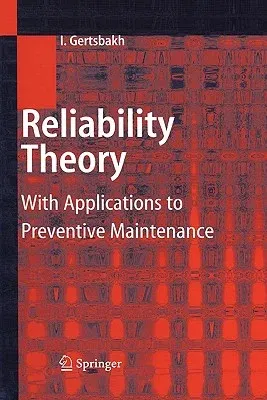The material in this book was first presented as a one-semester course
in Relia- bility Theory and Preventive Maintenance for M.Sc. students of
the Industrial Engineering Department of Ben Gurion University in the
1997/98 and 1998/99 academic years. Engineering students are mainly
interested in the applied part of this theory. The value of preventive
maintenance theory lies in the possibility of its imple- mentation,
which crucially depends on how we handle statistical reliability data.
The very nature of the object of reliability theory - system lifetime -
makes it extremely difficult to collect large amounts of data. The data
available are usu- ally incomplete, e.g. heavily censored. Thus, the
desire to make the course material more applicable led me to include in
the course topics such as mod- eling system lifetime distributions
(Chaps. 1,2) and the maximum likelihood techniques for lifetime data
processing (Chap. 3). A course in the theory of statistics is
aprerequisite for these lectures. Stan- dard courses usually pay very
little attention to the techniques needed for our purpose. A short
summary of them is given in Chap. 3, including widely used probability
plotting. Chapter 4 describes the most useful and popular models of
preventive main- tenance and replacement. Some practical aspects of
applying these models are addressed, such as treating uncertainty in the
data, the role of data contamina- tion and the opportunistic scheduling
of maintenance activities.


